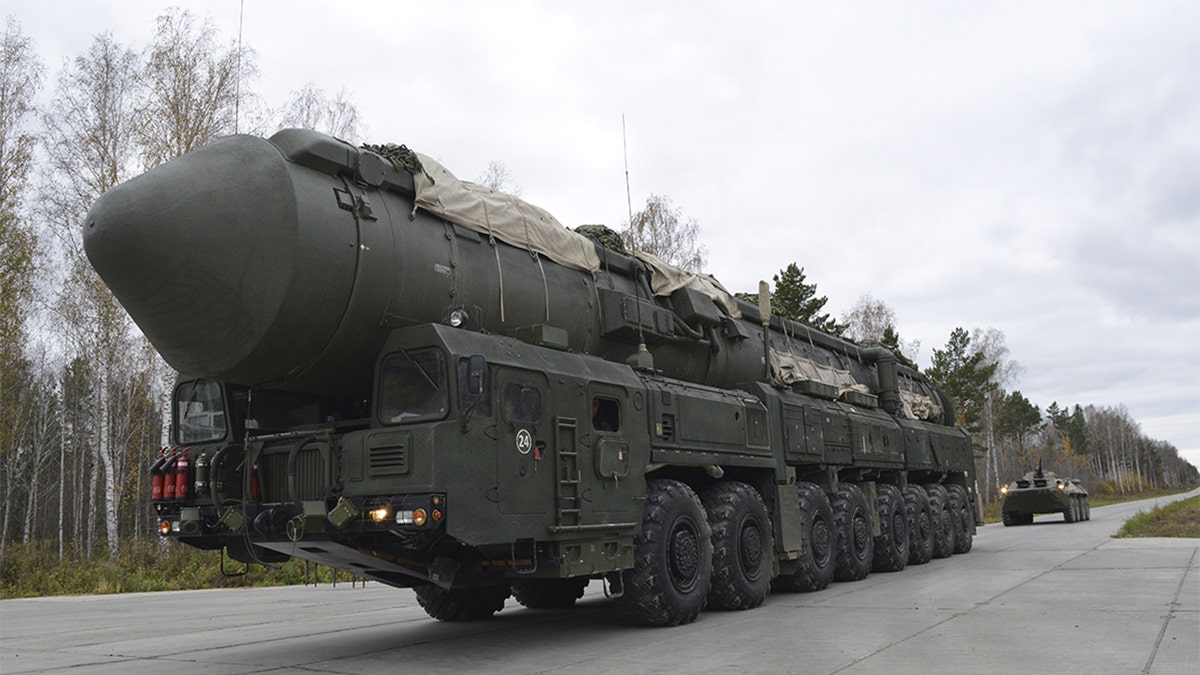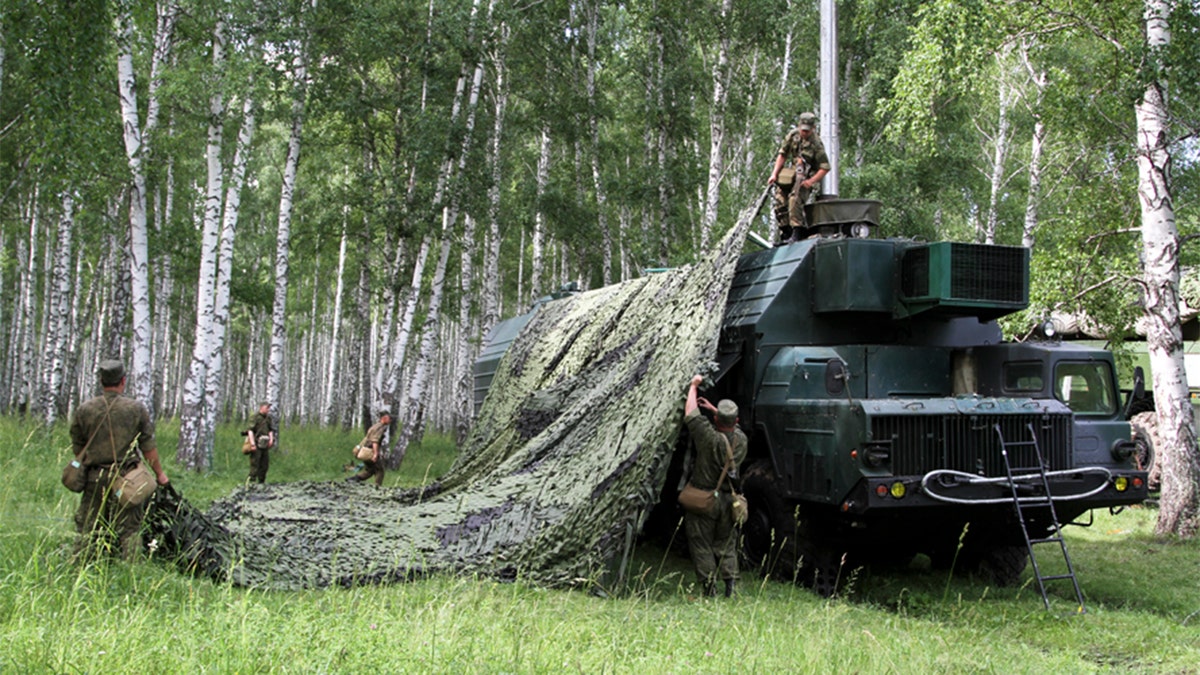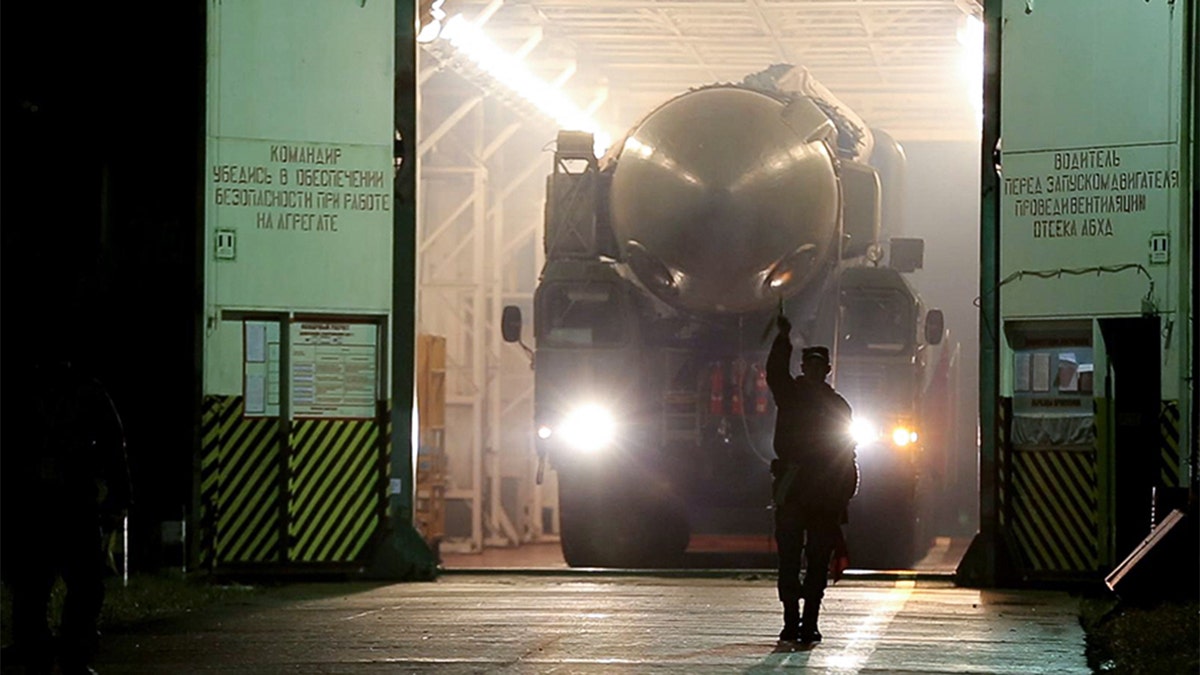
As Cold War-era fears of a nuclear strike have resurfaced, some experts say that a successful attack from Russia would be unlikely. Still, there are other causes for concern, such as regional conflicts that escalate and draw in nuclear nations. (Ministry of Defence of the Russian Federation Strategic Missile Forces)
Amid fears of a new cold war, an examination of Russia's nuclear arsenal by Fox News shows that there may be no need to worry about a devastating attack on the U.S.
Nuclear warfare experts say that Russia's arsenal of nukes is strictly for defense, and that while Moscow has a "first strike" option, it isn't likely to use it. In fact, a pre-emptive strike would not be very effective, according to military experts.
"Because we have this nuclear triad, the U.S. relies more on naval components, and for Russia, it's mostly land-based," Omar Lamrani, a senior military expert with Stratfor, a geopolitical intelligence platform, tells Fox News. He adds that the naval part of the nuclear triad -- the triad is a military force structure consisting of nuclear weapons launched from land, naval submarines and strategic aircraft -- is at an advantage over Russia due to its weak military.
“Because they have a weaker navy, they tend to use a more defensive strategy,” Lamrani says. “It gives them the ability to compensate for those primary military weaknesses.”
The Russian military operates on a fraction of the sum that supports U.S. forces, spending $69.2 billion annually compared with a much larger American war chest of $554.2 billion. While there are, numerically, more Russian land forces than U.S. troops, Russia's air and naval forces are considerably less robust, making its overall military structure much weaker.

Many of Russia's nuclear warheads can only be deployed from land-based systems. (Ministry of Defence of the Russian Federation Strategic Missile Forces)
Lamrani also suggests that Russia wants New START – Strategic Arms Reduction Treaty -- to stay in effect and keep a level playing field with the U.S. as it gives Moscow a seat at the table of global diplomacy. The treaty between the U.S. and Russia has been extended about three times since it was ratified back in 2010 as a revision of the previous pact. Under New START, the number of strategic nuclear warheads are to be reduced by half; the treaty also limits the number of deployed strategic warheads to 1,500.
If the treaty were lifted, Russia would not be able to build up its arsenal and would be placed at a severe disadvantage, the military analyst says.
“If there are no limits on nuclear weapons, Russia would not be able to compete with the U.S.,” Lamrani says. “New START gives them a bargaining position.”
Other nuclear experts say that if there were an escalation between the U.S. and Russia, it could still be a tough-to-contain situation.
“There are no winners. That’s the widely agreed-upon conclusion,” Hans Kristensen, director of the Nuclear Information Project at the Federation of American Scientists, tells Fox News, “If things begin to escalate and escalate out of control, we very quickly get into significant exchanges of nuclear weapons. We're talking about many hundreds of nukes fired back and forth.”
“So you could try to put X's on the maps and see how quickly that becomes an overwhelming amount of destruction, and of course collateral damage with radioactive fallout.”
Kristensen also says that a comparison of today’s arsenals with those of the Cold War is a poor one. "When we hear governments talking about the size of their stockpiles, they often compare them to the Cold War,” he says. “U.S. government officials will say ‘[Our stockpile is] less than 4,000 today; we haven't had that little since the Eisenhower years.'”

(Ministry of Defence of the Russian Federation Strategic Missile Forces)
“And of course the point is just that, yes, there are fewer than there were during the Cold War, but the weapons we have today are immensely more effective than those in the Eisenhower years. It’s a very poor comparison because you could do a lot more with what you have today.”
The nuclear scientist points out that a half-dozen other countries -- France, China, the United Kingdom, Israel, Pakistan and India—building up their nukes collectively over the last half of the 20th century raised the number of nukes globally. While the Cold War nuclear players have decreased, other countries like North Korea are increasing the size of their forces. Kristensen adds that he believes the biggest nuclear threat is more than likely a regional scenario like India and Pakistan, or the Korean Peninsula. Such a conflict would likely draw larger nuclear powers in.
"So now you can imagine a scenario where the U.S. doesn't get involved through their own nuclear conflict, but through a regional scenario where it would then have to commit nuclear forces," Kristensen said. And if the U.S. gets involved, he adds, you can expect that someone like China or Russia might come along to defend the other side.
With New START set to expire in 2021, Kristensen says that the most contentious issue is likely to be whether it will be extended for another five years. Failure to do so, he says, could turn this debate a contentious global issue.
“I think if New START is allowed to expire, it would mean for the first time since the ‘70s we would have no limits, no constraints on U.S. and Russian strategic forces,” He says. “That’s a much more serious issue because of the enormous capacity of these strategic forces, and also they're much more directly threatening to both countries. INF [Intermediate-range Nuclear Forces treaty] weapons don’t directly threaten the U.S. and Russia because of the range issue. They threaten regions and allies.”
